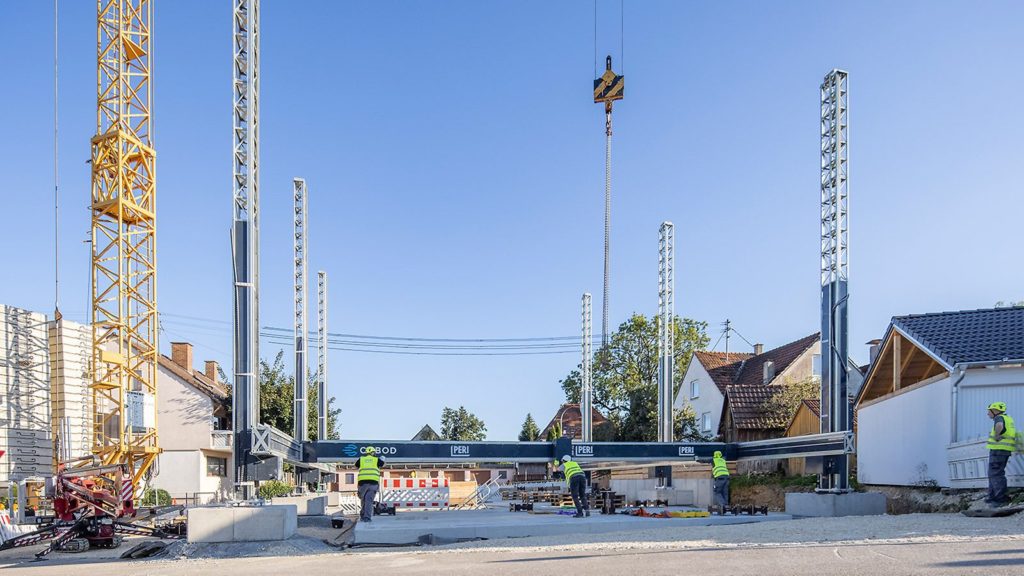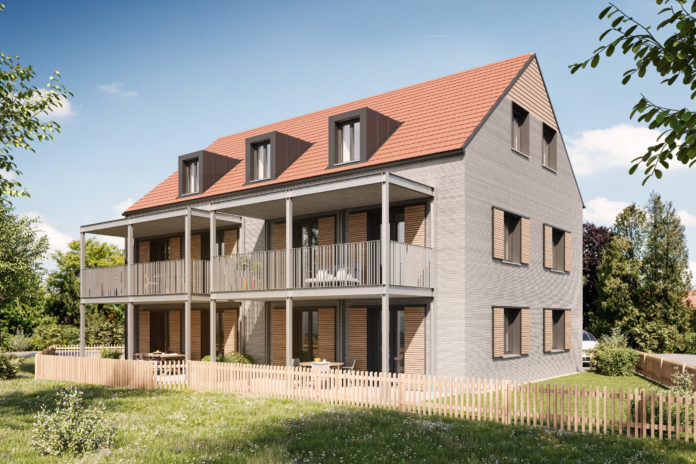Last month, we reported on the first 3D-printed residential building in Beckum, North Rhine-Westphalia (Germany). The two-storey detached house with approx. 80 sqm of living space per floor was entirely 3D printed.
Following the positive feedback that this initiative received, PERI GmbH, the construction company behind this project is on its way to achieving another 3D printed residential building, this time in Wallenhausen, Bavaria (Germany).
“With the project in Wallenhausen, we are seeing the PERI 3D construction printing team take the next important step. At the same time, PERI is consolidating its position as a leading company in the field of 3D construction printing,” says Thomas Imbacher, Managing Director Marketing & Innovation at PERI Group. “By printing the first apartment building in Germany, we are demonstrating that this new construction technology can also be used to print large-scale dwelling units. In terms of 3D construction printing, we are opening up additional areas of application on an entirely new level.”
Michael Rupp Bauunternehmung GmbH that has commissioned the project, will begin its own 3D printing journey in the construction sector as from 2021 through its newly founded subsidiary Rupp Gebäudedruck.
“Our family-owned company has enjoyed 25 years of success in the industry and has an array of satisfied customers in the region. This means that we have the edge in terms of knowledge and can draw on a wealth of experience as we enter the 3D construction printing market,” says Fabian Rupp, Managing Director of Rupp Gebäudedruck.

In the meantime, PERI will work with several partners for the construction of this three-floor apartment building:
Ulm-based architectural firm Mühlich, Fink & Partner BDA is in charge of this project’s architectural plans. Just like it was the case with the first project, HeidelbergCement provides the printable concrete here (the “i.tech 3D” material) while m-tec mathis technik gmbh sources the mixing technology.
“The properties of i.tech3D are tailored to the specific requirements of 3D construction printing using concrete,” says Dr. Jennifer Scheydt, Head of Engineering & Innovation at HeidelbergCement. “Our material has excellent pumping and extruding characteristics and works perfectly with the BOD2 printer [which can be handled by two operators]”
As a reminder, the system has a print head that moves about 3 axes on a securely installed metallic frame. Its main advantage is that it can move along its frame to any position within the construction and only needs to be calibrated once. This saves time and cuts costs.
The engineering office Schießl Gehlen Sodeikat assisted with the preparation work for the warrant. The Technical University of Munich planned and carried out the relevant approval tests.
The end-result?
PERI is on a mission to achieving five apartments across three floors with around 380 square metres of living space. Four of these apartments will be rented out the usual way while the other will be used as a benchmark for future projects.
As construction 3D printing is gaining momentum, we cannot help but ask ourselves this question: “does PERI want to make Construction 3D printing a standard in Germany?”
Remember, you can post free of charge job opportunities in the AM Industry on 3D ADEPT Media or look for a job via our job board. Make sure to follow us on our social networks and subscribe to our weekly newsletter: Facebook, Twitter, LinkedIn & Instagram ! If you want to be featured in the next issue of our digital magazine or if you hear a story that needs to be heard, make sure to send it to contact@3dadept.com






